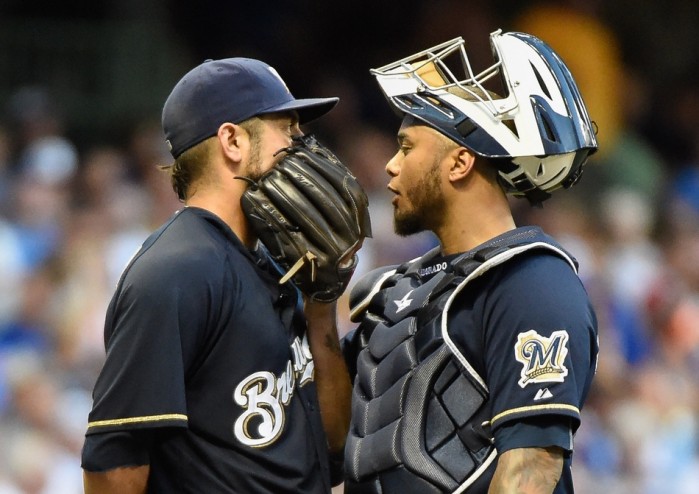When the Brewers signed Matt Garza prior to the 2014 season, they had to be hoping they were acquiring a pitcher who would be a fixture in their rotation for the next several years. Maybe even one who would push the team to a postseason berth. However, that is not what they have gotten. Over the past two full seasons, Garza has thrown 312 innings, posted a 4.20 FIP and a strikeout-to-walk ratio of barely better than two — although, to be fair, his 2014 was significantly better than his 2015.
Garza’s 2014 was fine. He was a two-win player (per BP’s WARP), as he had been for the two years prior. His 3.80 DRA in 2014 was good, and he combined it with a 3.51 FIP that was his lowest since 2011. But this performance did not carry over to 2015, when he put up a 5.36 DRA and was below replacement level for the first time since his ten-game cameo in his first big-league season in 2006.
The situation got so bad in 2015 that the Brewers shut down Garza at the beginning of September. This level of performance, obviously, is untenable for the Brewers — a rebuilding and developing team simply cannot afford to waste a rotation spot on a veteran pitcher who is not performing when they could give those innings to a younger player who needs big-league experience. The question, then, is how good Garza will be in the following two (or three) years.
Optimists would point to Garza’s 2014 FIP and DRA as evidence that 2015 was just a blip and that he was quite good just one year prior. However, unfortunately for the Brewers, I don’t believe that to be a realistic argument. Garza’s peripherals changed drastically in 2014, indicating that he had become a significantly different pitcher. He struck out far fewer batters than he had in any season since 2010, and his walk rate jumped back up again as well.
He was, of course, effective in 2015, but he was not the same kind of effective that he had been up until that point. In his previous few years, he had posted strikeout rates above 20 percent. But in 2014, that dropped to 18.5 percent, and it dropped even further to 15.6 percent in 2015. His walk rate is less concerning; after all, even at his best, he allowed more walks than the average pitcher.
But it his strikeout rate that is the crux of this concern. Garza’s 15.6 percent strikeout rate in 2015 was the lowest of his career, and it was joined by a continuing decline in velocity. The fact that an aging pitcher would lose velocity on his fastball is no surprise, but it is still significant. Each pitcher has his own tipping point at which he can no longer lose any more velocity and still be effective; it is entirely possible that point for Garza was his 0.5 mph drop from 2013 to 2014. He survived in 2014 because of a .268 BABIP, which was the lowest of his career. That number flipped in 2015, and he could no longer maintain success with this lowered velocity.
It’s difficult to accurately predict what exactly Garza will be in 2016 and 2017 because his peripherals often jumped around even during his prime. Even at his peak, he would walk a ton of batters, and his ground-ball rate would fluctuate between 37 percent and 50 percent. Therefore, given that his volatility even when he was good often made it difficult to figure out exactly what was required for him to be effective, it is no easy task today.
Ultimately, though, I believe the drops in fastball velocity and strikeout rate are significant. Garza was a frustrating player in his prime, but he was never as bad as he was in 2015, when his 4.96 FIP was by far the worst of his career. If the velocity decline turns out to have been due to an injury, a bounce-back is possible, but Garza has never been the healthiest in the first place. Thus, I expect this to be an indicator that Garza can no longer be counted on as a viable member of a rotation.

1 comment on “Matt Garza’s Distressing Future”